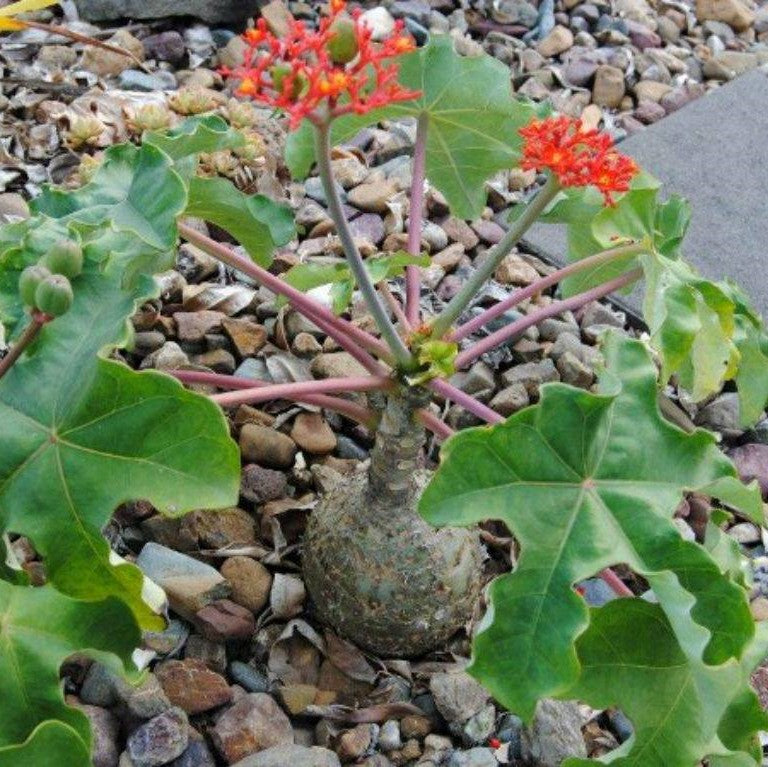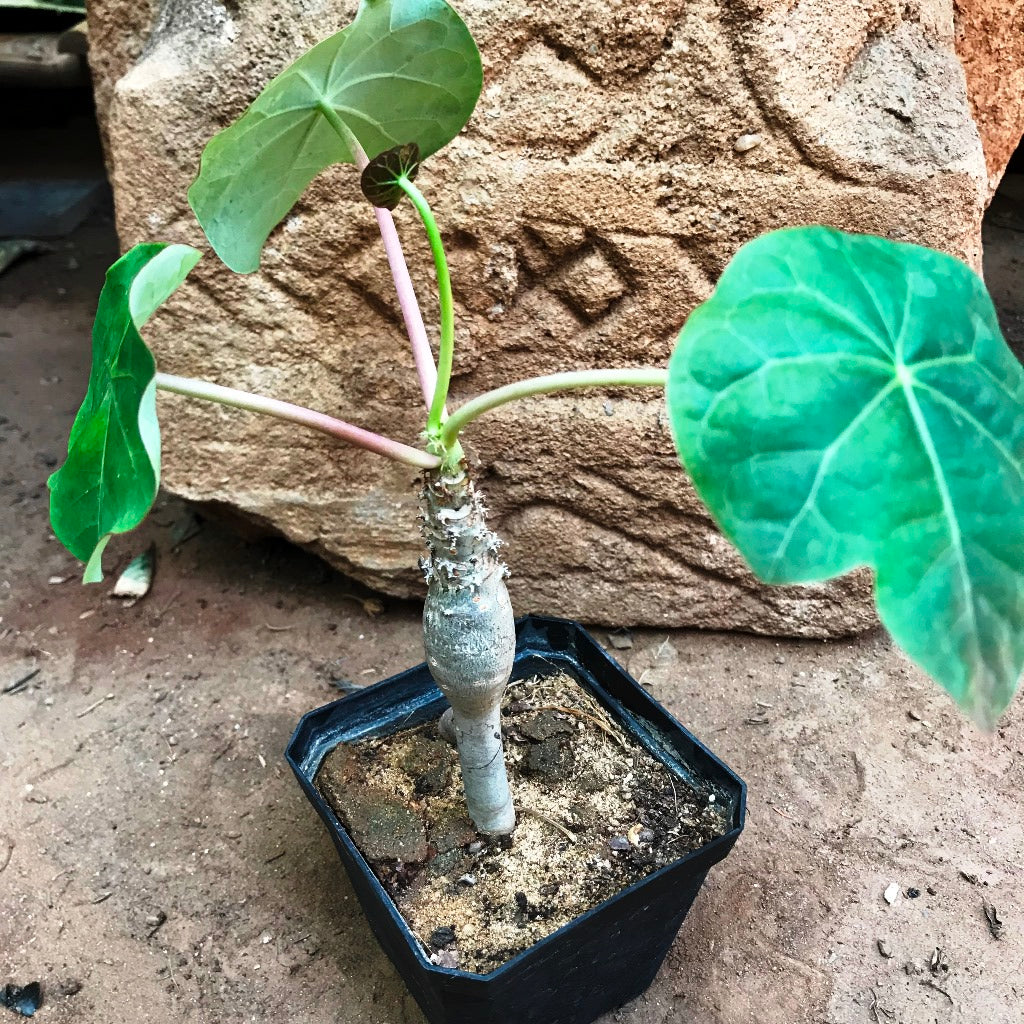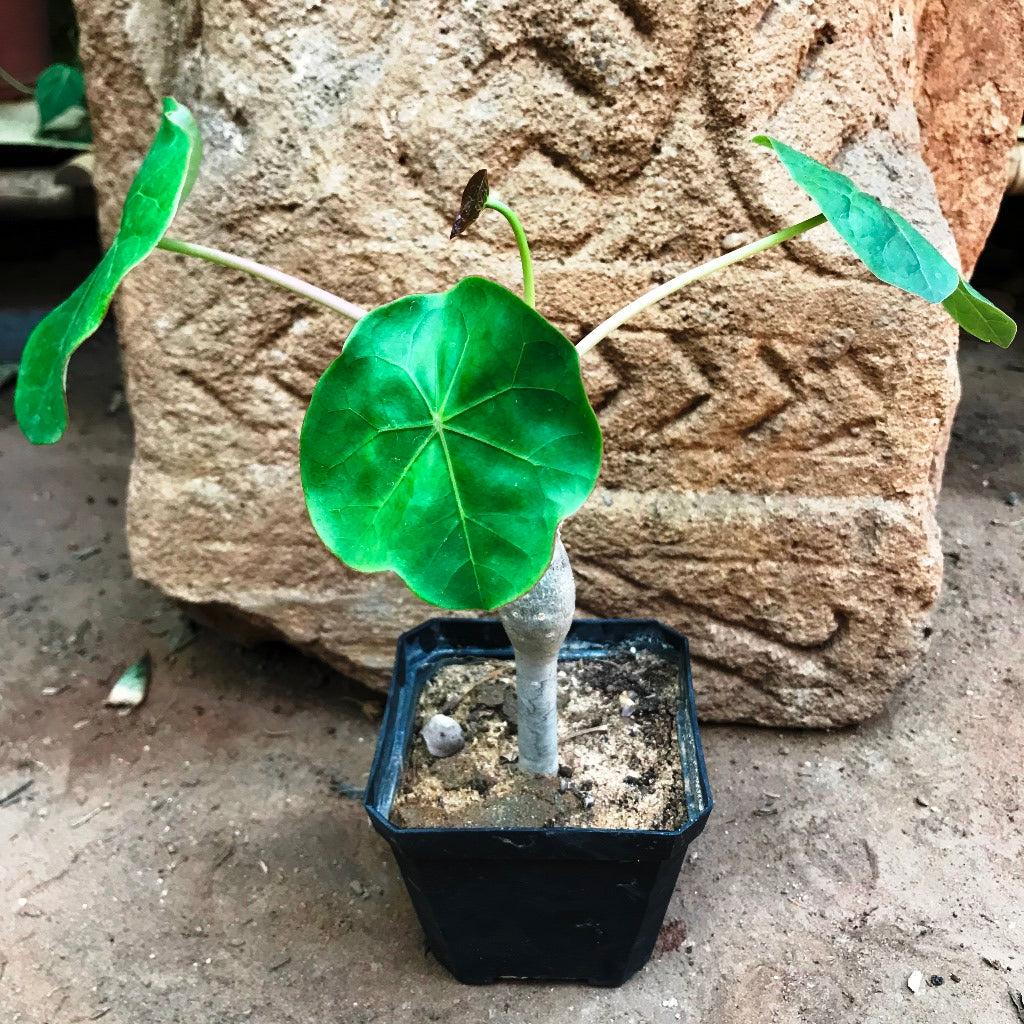Buddha belly
Origin
Madagascar
Family
Euphorbiaceae
Description
Jatropha podagrica is a beautiful ornamental succulent shrub with unique and attractive leaves, flowers and stem. Due to its swollen caudex, it is also called the Buddha belly plant.
Buddha plants can reach several feet tall. When it reaches full height, the swollen stem resembles a trunk, making the plant look more like a small tree with a sparse crown containing a few large leaves.
It’s a slow growing plant. The stem growing from the ground often has several smaller stems sprouting from the top that produce clusters of flowers. As the plant grows, the exterior portions of the stem swell up and thicken. The large leaves are dark green at the top and grayish at the bottom.
Jatropha podagrica bloom in spring and summer, and they will lose their leaves and go dormant during the winter months. The plant has coral-red flowers which attracts butterflies and hummingbirds alike.
Environment
Jatropha plants prefer bright sunlight and can happily tolerate partial shade as well. They prefer bright direct light and will tolerate partial shade.
Buddha Belly plants are drought tolerant and prefer to dry out between waterings. They would do well in a terra cotta pot, since terra cotta is porous and lets air and water move through the walls. When the terra cotta color lightens, you know the pot has dried and your Buddha Belly could use some more water.
Jatropha padrogica) needs a very well draining neutral to slightly acidic soil, and prefer to have dry conditions. Regular potting mix with sand mixed in works well for plants potted in containers, otherwise a cactus potting mix would work.
When your Buddha Belly plant shows signs of new growth in the early spring, that is a great time to begin a regular fertilizing schedule. We recommend once every 4 to 6 weeks during Jatropha growing seasons. Any all purpose fertilizer will work for Buddha Belly.
Buddha Belly plants will grow slowly, but they thrive with new soil every year. It is recommended to repot your Jatropha plant each year with a pot no more than 1 to 2 inches wider than the last pot (unless it is not ready to go a size up)
Landscape Uses
A stunning and unique ornamental addition to your home.
Caution
Jatropha is likely to exude a toxic latex when its tissue is damaged, which can cause irritation, inflammation and blistering.






















